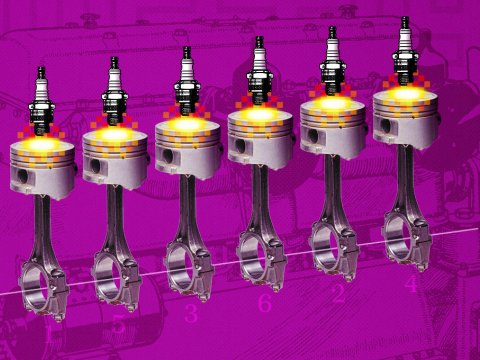Breaking Through the 10-Year Cloud Apprenticeship
Looking at the skills gap through the lens of experience could be the industry’s best shot at solving the talent shortage.
“If I need a unicorn, I just hire two people.”
This is something a customer told me during a recent discussion around the difficulties many companies are experiencing in filling technically skilled IT services and cloud positions.
The impact of this cloud computing skills shortage is well documented: we know how much it could cost the economy, we know the implications for competitiveness. We’ve known all that for years, and yet enterprises still struggle to recruit.
This is usually referred to as the skills gap but from the evidence I see, from recruiting a team of unicorns myself, the challenge is bigger than skills. It’s about experience. In fact, I believe that framing this issue as only a skills problem limits the industry’s effectiveness at bridging the gap.
The rise of cloud means many enterprises are racing to build well-governed, scalable and secure clouds or cloud-based applications. This is complex work and with the modernization of application development (think containerization) and lower headcounts in most IT teams, enterprises need to recruit heavily experienced generalists that can also specialize. This is the famous T-shaped person, with deep expertise in one area and wide exposure to lots of related areas.
If skills are the problem, the industry quickly thinks training is the solution. But you don’t see certifications listed above. Why? Because to build any production cloud system you have to make thousands of right decisions to come up with the best architecture. Certifications are necessary validation of skills, but the only way to get this level of judgement is through hard-earned experience that amounts to a 10-year apprenticeship.
If we level-up the discussion to include experience, will more and better solutions to this shortage emerge? Factoring in experience means any solution will be more long-term (there’s no shortcut to gaining experience) but breaking the cycle of talent shortages has already become a long-term challenge.
Before we get to what those solutions might look like, however, let’s look at where the experience gap is most acute right now.
How the experience gap looks today, and why
Today it matters just as much for IT leaders and their teams whether a disk is up to threshold as if their microservices are available as much as their targets require, and their website is showing the right messages to people at all times.
Containers are hot in this new world of modernized application development and automation. Kubernetes is rapidly becoming the container orchestration engine of choice and the best organizations are using it to make hundreds of deployments a day. For enterprise organizations, daily deployments could number into the thousands.
Kubernetes is new so experience here is automatically scarce. And, with developers now using Kubernetes to architect entire platforms, there is also a need to wrap these platforms in an ecosystem of security and application management (both of which are outside of a developers’ traditional responsibilities).
This is exacerbating the experience gap in cloud security skills. Traditionally developers didn’t have responsibility for security in their environments, but with the shift to the cloud, where they are creating networks and infrastructure via APIs and infrastructure as code, they have to own the security of this infrastructure.
As these developers race toward meeting release dates, monitoring and the future expansion of the platform are often an afterthought. This also makes cloud architecture and automation experience highly sought after, as companies with clouds that have grown up organically in this way start to struggle with automation and scaling in their legacy deployments.
Bridging the experience gap
These experience gaps will read like a list of the usual suspects for IT leaders, and while I believe that longer-term solutions built around experience as much as skills might finally break the cycle, IT leaders still have chairs to fill right now.
In the shorter-term, well architected reviews are essential for identifying exactly the right chairs to fill, such as global security architect roles that can take a holistic view of cloud and development ecosystems.
Nothing except perseverance is going to fill these and other roles, however. In the past, we’ve been able to turn up qualified cloud architects, with containers and security experience, only every 2-6 months. That’s with two internal talent acquisition people and eight outside agencies on the case.
To truly break the cycle and get ahead of the 10-year cloud apprenticeship, leaders need strategies for both enlarging the future talent pool and turning careers into apprenticeships that develop the next generation of IT and cloud professionals.
Building and maintaining these talent pools and pipelines is likely to be complex and will differ from company to company. But at the grassroots level, it might start at the helpdesk or intern level where people are encouraged to study Linux, Windows and AWS, to ready themselves for a move into a support role and into entry-level developer positions. Once there, they can build exposure to new technologies and platforms under the guidance of more experienced colleagues. This upskilling process could start even earlier if organizations can get closer to their local talent pool through relationships with educational institutions.
The solution for skilled but inexperienced staff already in position likely involves systematic experience-building projects. The experience gained needs to be distributed as widely as possible, so that it isn’t overly concentrated in one or two people who might one day leave.
No one is going to become the cloud architect you need right away. But recognizing the adjacent functions and creating the right pathways between them – and being more thoughtful about developing the talent the industry already has – is a good foundation for the future.
The outlook remains cloudy – for now
Looking ahead, recruiting in the area of IT services and cloud isn’t set to get easier any time soon. With growing trends toward hybrid-cloud environments, you can take those 10-years’ experience using AWS and throw in a requirement for experience using VMware or Kubernetes.
Forced to improvise, many organizations might end up with an AWS expert working alongside a VMware expert, collaborating to get those architectures right. Suddenly my unicorn-building customer looks ahead of the curve.
Left unchecked, the current cloud experience gap will only grow. Gaining experience is a slow process, but technology and business move fast. With every new development, experience compounds experience, enlarging the gap between the entry-level hopefuls and the hardened veterans.
Generalization and T-shaped people remain, in my view, the right approach. You don’t get to best of breed architectures and the fastest, most agile deployment processes without a broad knowledge base.
But while finding those generalists is so hard, perhaps the industry can also get better at developing them itself?

Why Every CIO Should Define a Cloud Strategy Now
About the Authors

Director of Professional Services Delivery Engineering
Eric Sakowski
Eric is a leader and technologist with more than 20 years experience developing and automating apps in various programming languages on a wide variety of platforms for a multitude of market verticals. Throughout his career he’s often been a defacto sysadmin to ship his own code, and has been automating deployments since the late 90’s. Joining Rackspace with the acquisition of Datapipe, Eric has been with the company for 7 years. Eric leads a geographically distributed team of architects, DevOps and automation experts.
Read more about Eric SakowskiRelated Topics


